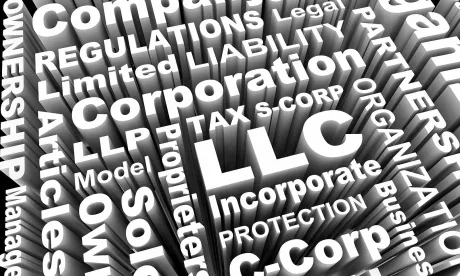A common question we receive from founders is whether to organize their start-up business as a corporation or as an LLC.[1] While there are many non-tax-related factors that need to be considered, this is often (at least in part) a tax-driven decision. Organizing the business as an LLC can come with certain tax advantages, such as avoiding an entity-level corporate tax and, subject to various limitations, permitting founders to use losses generated by the business and passed through on their Schedule K-1 to offset their other income. Alternatively, while organizing the business as a corporation results in an entity-level corporate tax and precludes the pass-through of losses, it may permit the founders to access the qualified small business stock (QSBS) rules of Section 1202 of the Code.[2]
The QSBS rules provide valuable tax benefits allowing shareholders of a corporation that is treated as a qualified small business (QSB) to exclude a portion of their gain on the sale or exchange of QSBS.[3] The QSBS rules have been around for about 30 years, but became more popular in 2016 when the rules were permanently modified to permit QSBS holders to potentially exclude up to 100% of their gain on the disposition of their QSBS. Specifically, a founder disposing of QSBS can exclude 100% of the gain from such disposition during a tax year up to the greater of (i) $10 million (less the sum of any gains already taken by the taxpayer for that specific issuer in previous tax years) or (ii) ten times the taxpayer's adjusted cost basis of the QSBS disposed of by the taxpayer during the tax year (10x Basis Limitation).
Because many businesses experience tax losses in their early years, one potential strategy is to operate through an LLC during the start-up years and convert into a corporation when and if it is determined that the business will be able to benefit from the QSBS rules. In addition, this strategy may permit founders to significantly enhance the 10X Basis Limitation, thereby maximizing the tax benefits available under the QSBS rules. The discussion below addresses this strategy both in terms of the potential to supercharge the QSBS gain exclusion and in terms of some of the risks that need to be considered before implementing this strategy.
The QSBS rules contain many traps for the unwary, and while some of these rules are relatively straightforward, other rules seem like land mines, that if stepped on, will kick founders out of the QSBS eligibility field with no way to return. This article does not address all of the QSBS requirements or potential traps, and any planning around the QSBS rules should be done in conjunction with tax advisors, especially as it relates to the interplay of the QSBS rules and LLCs, which can be particularly unintuitive and draconian for a taxpayer not familiar with these rules. The QSBS rules are only available to corporations and their shareholders. Members of an LLC are not eligible to exclude their gain under the QSBS rules upon the sale or exchange of their LLC interest. If, however, an LLC converts into a corporation, the stock issued (or deemed issued) in the conversion may qualify as QSBS. Considering that the QSBS rules provide for an exclusion of up to 100% of the gain upon disposition of QSBS, LLCs and their members should consider the benefits of converting their LLC into a corporation to the extent the QSBS requirements can be satisfied.
QSBS Considerations when Converting an LLC into a Corporation
General
Although a detailed discussion of the QSBS requirements is beyond the scope of this discussion, there are two QSBS requirements that should be considered. First, in order for shares to be treated as QSBS, from the date of formation of a corporation until immediately after the issuance of purported QSBS, the gross asset value of the QSB can never have exceeded $50 million. Second, in order to benefit from the QSBS rules, the shares must be held for more than five years prior to their disposition.
Once it has been determined whether a start-up business can meet the QSBS requirements and the founders understand the potential tax implications of converting their LLC into a corporation, it’s important that the founders understand the QSBS-related benefits, the risks of converting an LLC into a corporation, and the timing of the conversion.
Benefits of Deferring the Conversion of an LLC into a Corporation Until There Is a Significant Increase in the LLC’s Value
As noted above, the maximum gain from the sale of QSBS that may be excluded in a tax year for a particular issuer is limited to the greater of (i) $10 million or (ii) the 10x Basis Limitation.
Perhaps the most important benefit to be considered when deciding whether to convert an LLC into a corporation is the impact of the conversion on the 10x Basis Limitation. Under general tax principles, when an LLC converts into a corporation, the taxpayer’s basis in the shares received is based on the taxpayer’s basis in the LLC interests immediately prior to the conversion, which, for a founder, would typically be relatively low and based on the amount of cash that the founder has put into the business. However, for purposes of the 10x Basis Limitation, the taxpayer’s basis in the shares received on the conversion is based on the fair market value of the business at the time of incorporation and not the taxpayer’s carryover basis. This can have a potentially enormous impact on the 10x Basis Limitation to the extent that there is an increase in the value of the business from the date the LLC is formed until the date that the LLC is converted into a corporation. In order to take advantage of the 10x Basis Limitation, it may be beneficial to defer the timing of the conversion of the LLC into a corporation until there is significant appreciation in the fair market value of the LLC, thereby increasing the 10x Basis Limitation.
The following is an illustration of the benefits of deferring the conversion of an LLC into a corporation to benefit from the 10x limitation:
In 2014, Founder organized XYZ as an LLC. Founder contributed $100 thousand to XYZ in exchange for 10 units representing 50% of XYZ. In 2016, when Founder’s XYZ units were worth $5 million (still 50% of XYZ), XYZ converted into a corporation issuing 10 shares of stock to Founder worth $5 million in exchange for Founder’s 10 XYZ units. In 2023, Founder sold the 10 XYZ shares for $50 million. In determining Founder’s gain exclusion pursuant to the 10x Basis Limitation, Founder looked to the fair market value of his units in 2016 at the time of the conversion, which was $5 million. Therefore, under the 10x Basis Limitation, Founder can exclude up to $50 million of gain on exit. However, only the gain that accrued after the conversion of XYZ from an LLC to a corporation is eligible for exclusion under the QSBS rules, which means that Founder (i) will pay tax at long-term capital gain rates on the $4.9 million of gain attributable to the XYZ units immediately prior to the conversion ($5 million of value on the conversion date less the $100 thousand contributed by Founder in 2014) and (ii) will be able to permanently exclude the remaining $45 million of gain on the sale.
As this example illustrates, Founder was able to permanently exclude $45 million of gain on the disposition of the XYZ units; however, if Founder organized XYZ as a corporation in 2014 and sold the shares for $50 million in 2023, Founder would only have been able to permanently exclude $10 million (the greater of $10 million and 10 times Founder’s $100 thousand basis) from what is an economically similar transaction. While the delayed conversion strategy may seem like a no-brainer, there are certain costs and risks associated with this strategy that need to be considered.
Potential Risks of Deferring Conversion of an LLC into a Corporation
Pre-Conversion Gain Is not Excludable From Income
Although the strategy of delaying the conversion of an LLC into a corporation can potentially significantly enhance the 10x Basis limitation, it should not be entered into lightly. The first consideration is that the taxpayer’s excludable gain for purposes of the QSBS rules is limited to the gain that accrues after the LLC converts into a corporation. At an exit event, any gain that existed in the business at the time of the conversion is taxed under ordinary tax rules (typically at long-term capital gain rates). Therefore, on a disposition of QSBS (that was issued in a conversion of an LLC into a corporation), the taxpayer will not be able to exclude any gain that accrued prior to the conversion of the LLC into a corporation.
Depending on the actual facts, deferring the conversion of an LLC into a corporation may result in a less favorable result than if the business were initially organized as a corporation. For example, in the scenario above, assume that Founder’s shares were sold in 2023 for $7 million instead of $50 million. Under this alternative, only $2 million is eligible for the QSBS exclusion (the $7 million received less the $5 million fair market value on the date of the conversion in 2016), and all of the pre-conversion appreciation equal to $4.9 million is includable in income. If, instead, XYZ was organized as a corporation in 2014, the entire $6.9 million of gain on the sale (the $7 million received less Founder’s $100 thousand basis) would be excludable under the QSBS rules.
For businesses initially organized as an LLC, a careful analysis needs to be performed in order to determine whether to convert the LLC into a corporation early in the life of the business to eliminate or minimize the amount of gain accruing prior to the conversion of the LLC (which gain is not eligible for the QSBS exclusion), or whether to defer the conversion of the LLC into a corporation until there is significant appreciation in the fair market value of the business thereby increasing the 10x Basis Limitation amount. Taxpayers need to carefully analyze each scenario on a case-by-case basis and discuss with their tax advisor factors such as the expected amount and timing of the appreciation of the LLC’s business and model out the Section 1202 implications of converting the LLC into a corporation.
$50 Million Gross Asset Test
When an LLC converts into a corporation, although the corporation takes a carryover basis in the assets, whether the $50 million gross assets test is satisfied is based on the fair market value of the assets of the company (including any unrealized built-in gain) immediately after to the conversion. As the strategy to enhance the 10x Basis Limitation ties into the $50 million gross asset test, founders trying to maximize the 10x Basis Limitation may want to delay converting an LLC to a corporation until the gross asset value is as close as possible to $50 million. Founders, however, need to be cautious with this strategy and make sure they do not breach the $50 million threshold because stock issued after the $50 million threshold has been breached can never qualify as QSBS.
To the extent there is any concern that an LLC’s value is approaching the $50 million threshold, the parties may consider engaging a valuation firm to ensure that the $50 million threshold was not breached.
5-Year Holding Period Requirement
A holder of QSBS must satisfy a five-year holding period requirement prior to the date of disposition in order for the gain to be eligible for the exclusion. A taxpayer that disposes of its stock prior to satisfying the five-year holding period requirement will not be eligible for the QSBS gain exclusion.
When an LLC converts into a corporation, the five-year clock starts running on the date of the incorporation. Looking back to our scenario above, although Founder benefited from a large gain exclusion, that exclusion came at the cost of having to hold the investment for nine years from 2014 through 2023.Parties considering the strategy of delaying the conversion of an LLC to a corporation to maximize the 10x Basis Limitation should consider the expected exit date of their investment to determine whether it is likely that the five-year holding period will be satisfied post conversion of the LLC to a corporation.
Additional Tax Considerations When Converting an LLC into a Corporation
Generally, regardless of the method used to convert an LLC into a corporation, the conversion should be eligible for treatment as a tax-deferred contribution under Section 351 in exchange for the stock of the newly formed corporation. Notwithstanding this general rule, under certain circumstances, the conversion can trigger some tax to the pre-conversion members of the LLC, and that tax could potentially be a significant hit. In particular, if an LLC has outstanding debt at the time of the conversion, that could result in the conversion being partially taxable if (i) the outstanding debt exceeds the tax basis of the LLC’s assets immediately prior to the conversion, or (ii) a member of the LLC has been allocated losses and deductions attributable to such member’s share of LLC debt. Any founders considering the delayed conversion strategy should discuss with their tax advisors whether any potential tax leakage could result from a conversion of the LLC into a corporation.
Endnotes






 />i
/>i

